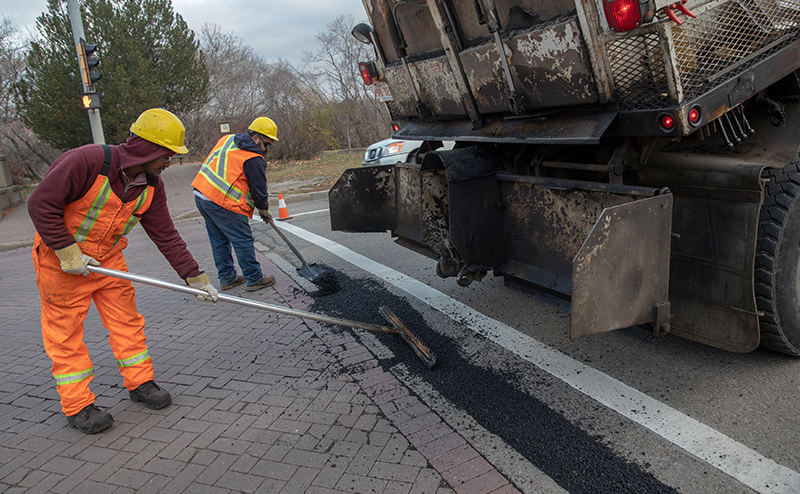
Learn more about how the City of Edmonton assesses and maintains streets.
Pavement and Road Management
Pavement Management is a method to assess pavement condition and identify and plan
maintenance, renewal and renewal needs. A pavement management system tracks pavement inventory and condition, estimates future conditions, and determines requirements and costs. This tool also helps to develop and prioritize projects.
The pavement management system identifies which roads in Edmonton require maintenance or renewal based on cost and the condition of the road. This process identifies the right treatment at the right time to improve overall road conditions. It also helps the City of Edmonton (City) plan the Roadway Renewal Program and the funding required to improve Edmonton’s roads, sidewalks, and curbs.
Each year, the City collects roadway, sidewalk and curb data, which helps identify what infrastructure requires maintenance, now and in the future. The data collected each year includes:
- Pavement roughness
- Pavement structural capacity
- Pavement surface-level distress
- Overall pavement condition
Once all the data is collected, a recommendation is provided for the type of renewal treatment that is required. The types of upgrades include:
- Preventative treatments (examples: crack sealing and micro surfacing)
- Spot repairs
- Pavement resurfacing
- Renewal
- Reconstruction
Automatic Road Analyzer (ARAN)
The Automatic Road Analyzer (ARAN) is a multi-purpose pavement data collection vehicle. It uses sensors such as ultrasonics, gyroscopes, lasers, GPS, accelerometers and high definition cameras to take measurements along arterial and collector roadways.
The ARAN collects information about pavement rutting, grade levels, roughness and crack detection.
Falling Weight Deflectometer (FWD)
The Falling Weight Deflectometer (FWD) assesses pavement strength and capacity. It’s a towable trailer that drops a plate onto the road, which simulates a moving truck. This testing measures the pavement structure, load carrying capacity and the remaining service life of the road.
The FWD collects data for arterial and collector roads.
Visual Field Inspections
A field inspection determines the visual condition of sidewalks and curbs and indicates the surface condition, including any pavement distress, and a grade level is given to the asset.
The City and most Alberta municipalities follow the Alberta-specific Visual Condition Index, which indicates a pavement section's general condition (a number between 0 and 10) based on visual distress. This index was based on work initially developed by the United States Army Corps of Engineers and has since been adopted and further developed by the Alberta provincial and municipal transportation agencies.
The severity and extent of pavement surface distress, such as cracks, patches/potholes, ruts, distortion and ravelling, are measured and given a rating score.
The Visual Field Inspections are collected on set schedules for roads, curbs and sidewalks:
- Arterial roads, sidewalks and curbs: once every 2 years (even years)
- Collector roads, sidewalks and curbs: once every 2 years (odd years)
- Local roads, sidewalks, curbs and alleys: once every 4 years
Contact Us
Lifecycle Management
12th Floor, Edmonton Tower
10111 104 Ave NW
Edmonton, AB T5J 0J4
| infrastructure@edmonton.ca |

